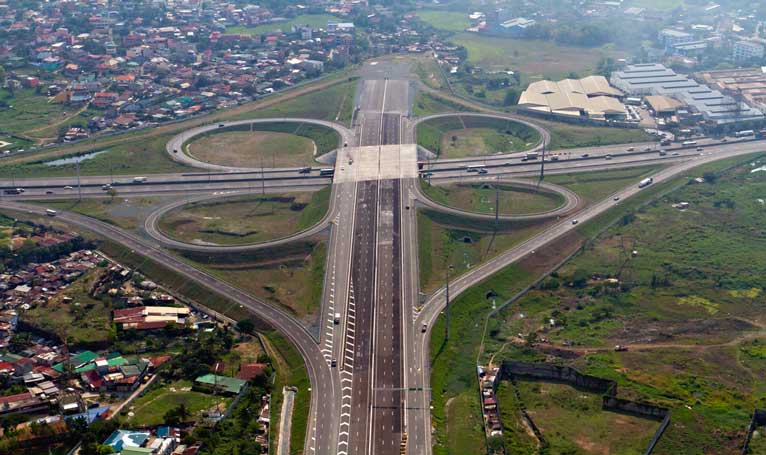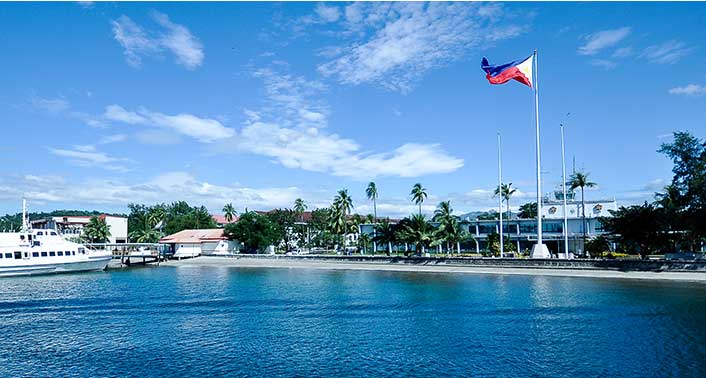Milling on the dock of the bay
Posted 7 years ago
Back in 1965, when the iconic song “Sittin’ on the Dock of the Bay” was released by the great Otis Redding, Subic Bay was the United States’ largest overseas military base.
Stretching across a mammoth 262 square miles, roughly the size of Singapore, the base ringed one of Asia’s most natural deep water harbors, located a three-hour drive north of Manila, the capital and economic heart of the Philippines.
The U.S. military left Subic in 1992. In the 25 years since, the Bay slowly has been put to commercial use as Subic Bay Freeport Zone — a tourist attraction as well as an industrial and port zone. Achieving the full potential of the Bay’s natural assets is a long way from complete, but its fortunes are improving, not least in the shape of the Interflour Group’s gleaming new flour mill, located just a short haul from Subic’s two bulk handling terminals.
 |
| Turkish bin manufacturer Obial supplied 12,000 tonnes of wheat storage at the subic Bay mill. Photos by Michael King. |
Located on a 5.8-hectare site within the Freeport, Mabuhay Interflour Mill checks all the boxes when it comes to modern design and equipment (see sidebar, page 34) and offers ample space for planned future expansion.
When the Subic mill becomes fully operational early next year, Interflour will boast a network of 10 flour mills — ? in Southeast Asia and one in Turkey. For the Singapore-headquartered company, its new $30 million greenfield facility represents a strategic move into a fast-growing market.
“After Indonesia, the Philippines is the largest flour consuming country in Southeast Asia, and the forecast is it will continue to increase,” said Greg Harvey, managing director and chief executive of Interflour.
One of Asia’s fastest growing countries
The Philippines is, indeed, perfectly poised for Interflour’s entry. Although President Rodrigo Duterte unsurprisingly has received ample international criticism for his “heavy-handed” approach to justice, the Philippines economy is one of Asia’s star performers. For most of this decade, GDP growth has been over 6% per annum and economic expansion of 6.8% in 2016 is forecast to be followed by growth of at least 6.5% this year.
As the country increases in wealth, its dietary requirements are becoming more grain-reliant as higher levels of noodles, bread and meat are consumed. And, given that the population of 103 million has a median age of under 25 years, this trend is expected to accelerate in the years ahead.
“We have been exporting high protein flour there for the bread market for the last seven years, and that’s where the real growth will be,” Harvey said. “The largest proportion of flour consumed in the Philippines is bread and all-purpose flour, which is Interflour’s strength, so we believe this investment will be very positive for the Group as a whole.”
Market opportunities
The Philippines consists of thousands of islands but the majority of the voting age population live on its largest and wealthiest island, Luzon. The rest of the population is largely split between the Visayas group of islands and Mindanao, the country’s second largest island.
Construction of Interflour’s new mill at the leading gateway port to central Luzon was no accident. Tina Piguing, former chief financial officer of Interflour Group and now CEO of the company’s operation in her homeland, said Interflour had a multi-pronged strategy to successfully increase market share.
She noted that the Philippines currently has 18 milling companies operating 20 flour mills, 9 of which are located in Metro Manila and 4 south of Manila. A central Luzon location, therefore, offers rapid access to fast-growing cities north of Manila — an enticing captive local market — as well as easy distribution options into Manila, where the company already operates a warehouse and where additional storage is being sought north of the city.
“Central Luzon’s population, like the Philippines’ in general, is increasing,” she told World Grain on a recent tour of the new mill. “It’s young and mobile, and diets are changing. People have jobs and disposable income is increasing. So while people are still eating rice, more are switching to flour or flour products. They don’t want rice every meal.
“Metro Manila is still the biggest market, though. We are looking at a new warehouse there, perhaps of 1,500 square meters, which we can replenish daily. But central Luzon is a great market in its own right and we’re best placed to serve it.”
 |
| Alapala supplied most of the milling equipment for the project, including these separators. |
Perfectly located
Businesses located within the Freeport are eligible for a range of tax and trade benefits. But for Interflour, Subic Bay’s prime draw is its location in Luzon and, even more importantly, the port access it provides. Subic Bay offers two bulk handling terminal options, which means the company can receive vessels up to panamax size, thereby enabling Interflour to leverage economies of scale for imported grains across its Asian mills.
The further a mill is from port, the higher the costs of production, explained Piguing. Because Interflour is able to buy in bulk for the Group’s network of mills and can receive deliveries on large vessels, this reduces flour production costs by maximizing freight and sourcing savings. In June, for example, the company chartered its largest vessel yet from Western Australia, loaded with 71,000 tonnes of wheat and malt barley. This vessel delivered grains to mills across Interflour’s Asian network, including Subic Bay.
“We buy grain as a group and Subic has the capability to unload panamax vessels so this is a strategic advantage for us,” she said. “Port access also means we can send out finished products in barges to Manila, or to Cebu in Visayas and the port of Davao in Mindanao.
“Or we could ship our products out by containers — whatever is the most efficient method.”
 |
| Interflour employees observe the company’s new flour mill in Subic Bay, Philippines. |
Which brings us to Interflour’s end game. At full capacity, which is expected to be achieved in the new year, the new mill gives the company the potential to secure an 8% to 9% share of the Philippines’ flour market. But Interflour has the potential to triple capacity in the future by building two more mills on its existing Subic site to take daily milling capacity to 1,500 tonnes.
“The Philippines’ noodle and bread market is 143,000 tonnes a month of demand, and we’re looking at about 7% of that initially,” Piguing said. “We have the land, so when we want to expand we can. It takes about two years to build a mill, so we need to think strategically about the next step to gives ourselves enough time.”
Initially the company is offering a handful of lead products in the Philippines with flour to be distributed under three brands — Kabayan and Mabuhay to the bread market, and Tambuli, which is aimed at the noodle market.
“We’ve been marketing here since March and we’re in discussions with institutional customers already,” Piguing said. “They are just waiting for us to start local production so we can fully meet their requirements. Most of the players here in the Philippines are local and family-owned. We take a corporate approach. We can benchmark our quality against our performance elsewhere in Asia, where markets are very competitive, so we think we can offer something different — better — to buyers.
“We are quite bullish on demand in the Philippines. They know the Interflour name so there is no question on the quality of product or ability to deliver so that helps.”
Harvey said being a fresh supplier in the market also will aid Interflour’s push into the Philippines.
“The Philippines has been a market with a long history of using U.S. wheat and local millers have a strong hold on the market,” Harvey said. “We are very excited about being the first foreign entrant into the market.”
 |
| The new mill’s cleaning house features Satake color sorters. |
Mill details
Interflour’s $30 million Mabuhay Interflour Mill has daily milling capacity of 500 tonnes. Tina Piguing, CEO of Interflour’s Philippines operation, explained that this will mean importing around 100,000 tonnes of grain next year to produce approximately 76,000 tonnes of flour. The new six-floor mill, complete with a bran warehouse next door, was constructed on time and within budget. Project manager Arco Van Herk, a Netherlands-born, 30-year industry veteran, told World Grain that the mill employed less than 100 people and was “highly mechanized and automated.”
Turkey-based Alapala supplied almost all of the milling equipment, with Damas Denmark providing one 200-tonne-per-hour wheat separator. Obial, a Turkish company, supplied 12 steel bins for wheat storage.
“The mill has 12 dry wheat silos with a truck in loading capacity of 400 tonnes per hour,” Van Herk said. “So we have 30,000 tonnes of wheat silo storage, and 800 tonnes of flour silo storage.”
Construction of the mill involved carrying out 38,000 meters of pilings, some 15,000 cubic meters of concrete was cast and 4,000 tonnes of reinforced steel was used during the build.
“Peak manning on the site during construction reached 1,300 people and during the last wet season Subic Bay was affected by no less than 15 typhoons, so it’s not the easiest place to build,” Van Herk said.
The design of the 5.8-hectare Subic Bay site is geared toward expansion in the future, with the plans including the option to triple output to 1,500 tonnes of daily milling capacity.
Source: world-grain.com














































Loading Comment